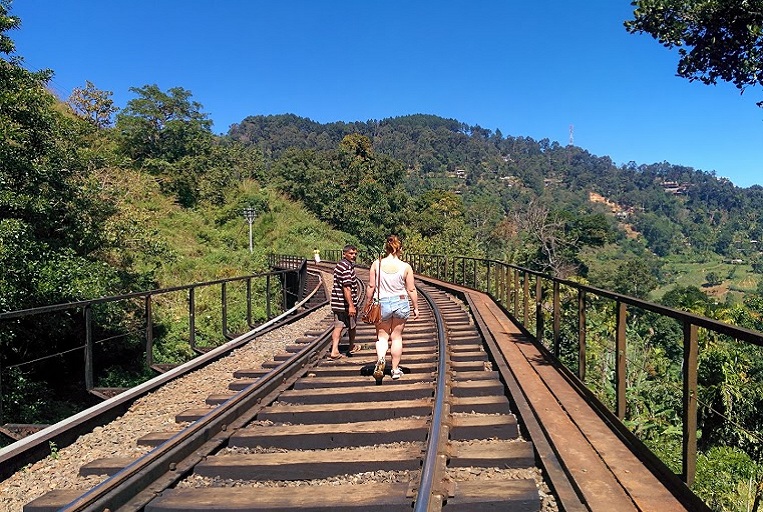If you want to plan a one-of-a-kind trekking focused holiday in Sri Lanka, you need to get off the trails and get on the rail tracks instead!
So why would you want to trek by the tracks and not the real way?
“Scenic” would be a most definite answer! By following the railroad in Sri Lanka, you won’t get lost but will still come across forests, tea estates, remote villages, beautiful streams and many waterfalls.
The renowned hill country in Sri Lanka is a good place to start. Steeped in colonial history and home to some of the world’s best tea industries, hikers should follow the train tracks through the tea plantations of Nuwara Eliya.
Sri Lanka is a treasure trove for nature lovers and hiking is just one way to explore the riches of the island nation. By trekking through the rail tracks, you can explore each village by foot, find the real wilderness and traditional Sinhalese village life while also visiting hip beach resorts and exotic tourist destinations.
Here’s what you would ideally see during a hill country trek…
High rise mounds of earth, studded with luscious tea bushes, where Sinhalese villagers dressed in sarongs intermingle with the leftovers of colonial influence from the Brits. Waterfalls cascade around steep hillside corners and plantation workers wash off the day’s dirt from their mahogany toned skin. Smiling Buddha statues are located on random rocks and clusters of shanty houses are found in some areas along the tracks. Yellow wildflowers sprout from between the rails and the ties and these are loved by the children and stray pups wandering about the house clusters.
Following the railways tracks on your trekking holiday in Sri Lanka will expose you to travel experiences and sights that you may have never expected to come across.
Here are some amazing sights witnessed by tourists who’ve chosen to trek on the tracks in Sri Lanka:
- Rare sights of wild animal remnants; proving the existence of animals such as leopards hunting their prey.
- Elgin Falls is visible between Ambewella and Nanu Oya
- A view of Adam’s Peak from Great Western Railway Station
- Devon Falls and St. Claires Falls in Talawakelle
- Beautiful tea estates in Hatton
By now you are probably wondering if the railroad system in Sri Lanka an efficient one?
Rail came into existence in Sri Lanka in 1864, primarily to transport coffee plantations from Kandy to Colombo to be exported to Europe and the rest of the world.
Today, the railway tracks are as important as the roadways. While the buses and trains have rather similar timings and fares, people prefer the train:
- For short distances because road traffic is not involved and the destination can be reached faster
- For long distances because of the scenic views and you are not bound to a single seat in the train
When public road transport was not well established a few years ago, villagers would have to walk a few kms to get to public transport and travel by bus to the next village. Instead, if they walked via the wail track, the distance is shorter and quicker.
Locals use the railway system not just for transport but also to work and live alongside it. The scenery you witness along the tracks is absolutely untouched, giving you a hidden glimpse of Sri Lanka – places where tourists would otherwise never even think about exploring. Along with these hidden glimpses, you will also discover hidden and unbeatable views of the popular tourist attractions in Sri Lanka.
From experienced tourists, we have a collection of top railroad trek recommendations:
- Ohiya to Pattipola – 7kms. This is the base of Horton Plains. The amazing thing about this trek is that it is within Horton Plains limits and goes through dense forestations.
- Ambewela to Nanu Oya – 15kms. This is in the Nuwara Eliya district. The Horton Plains border is close to Nanu Oya; so in this trek, you would still walk within Horton Plains limits.
- Hatton to Inguru Oya – 28kms. Also in the Nuwara Eliya district, this trek gives you stunning views of lush green hills and walks you alongside many cascades.
- Ohiya to Idalgashinna – 9kms. In the Badulla district, there are a high number of awesome railway tunnels to venture through!

